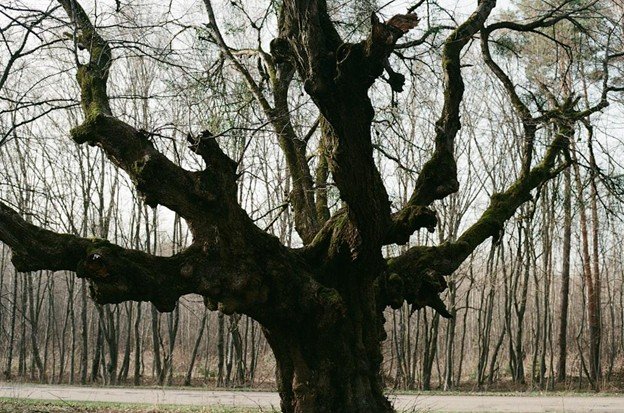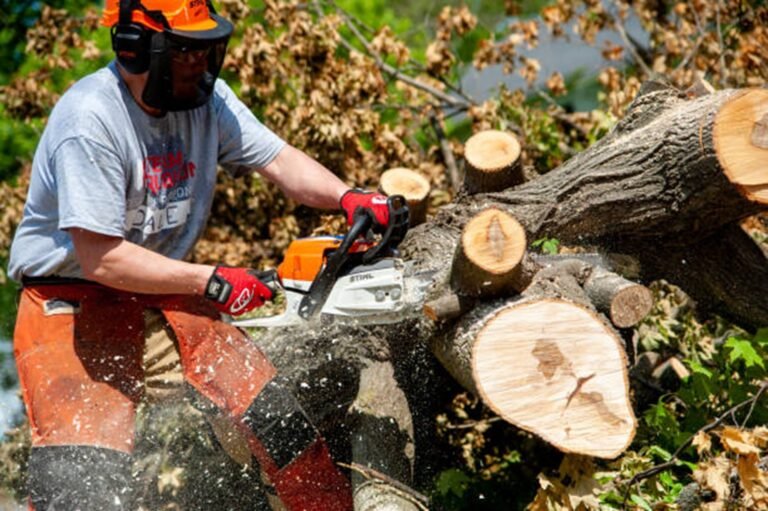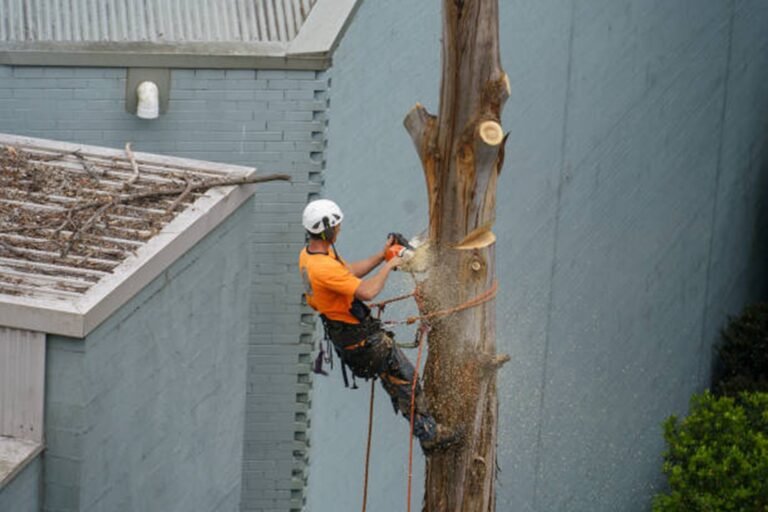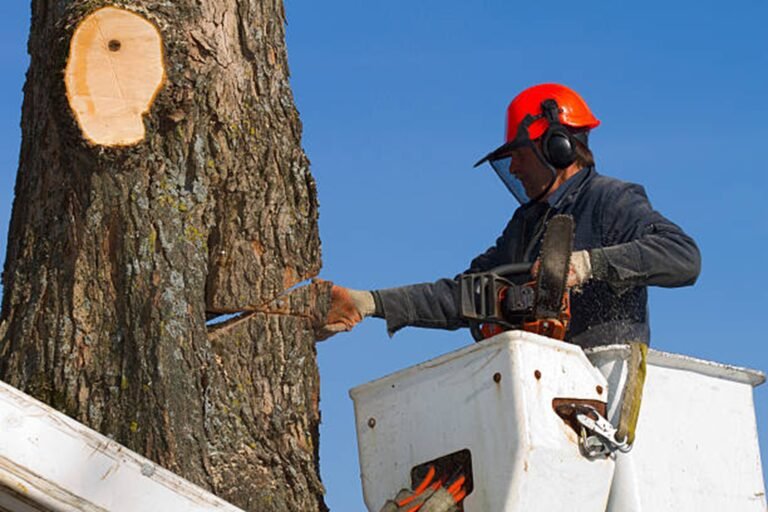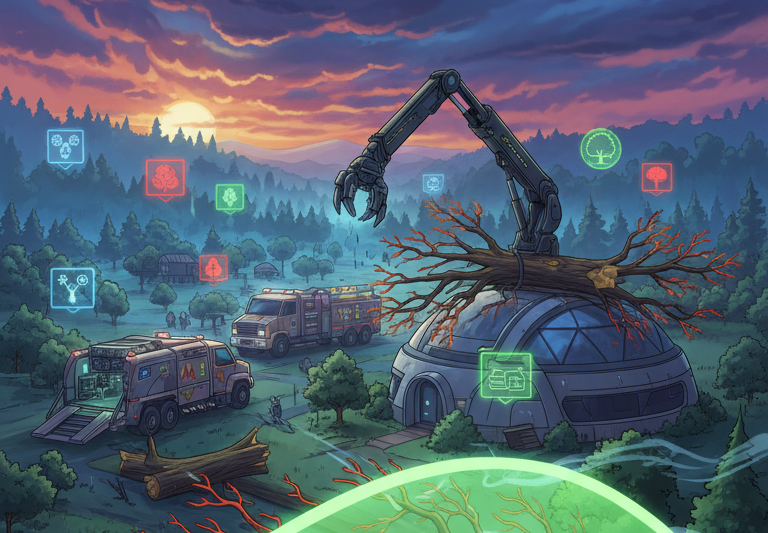What Are Signs of a Dying or Dangerous Tree?
Spotting a dying or dangerous tree before it becomes a serious problem is essential for any Chesterland homeowner. Trees don’t suddenly fail – they give warning signs that something’s wrong.
Whether it’s storm damage, disease, or age, trees show distress in predictable ways. Dead branches, unusual lean, root problems, or canopy changes all signal potential trouble ahead.
This guide covers the most common warning signs, what they mean, and when to take action. Catching problems early saves thousands in property damage and keeps your family safe. At Canopy Kings Tree Service, we help Chesterland homeowners identify three risks before emergencies occur. We offer free safety assessments and professional tree removal services to keep your home safe year-round.
Common Warning Signs
Trees usually give off warning signs before they fail – the key is knowing what to look for. Ignoring these signs can lead to major property damage, personal injury, or expensive emergency tree services. Whether it’s dead limbs, leaning trunks, or changes in the canopy, these red flags are your tree’s way of saying something’s wrong. In this section, we’ll walk through the most common signs of a dying or dangerous tree. Catching issues early is the best way to stay safe and avoid costly surprises.
1. Dead or Hanging Branches
Large, dry branches that hang or fall easily are a clear sign of decline. These can break off during storms and damage nearby structures or injure someone below. Regular tree trimming and pruning can help reduce this risk.
2. Sudden Lean or Shift
If a tree starts leaning more than usual, especially after a storm, it may indicate that the root system is failing. Leaning trees are unstable and should be assessed right away. In some cases, tree removal is the safest option.
3. Cracks or Splits in the Trunk
Visible cracks or open wounds in the trunk can weaken the tree’s structure and make it more likely to break during high winds or storms.
4. Root Damage or Uplifted Soil
Roots pulling out of the ground, exposed roots, or lifted soil around the base of the tree may mean it’s starting to fall or shift. This often follows heavy rain or storm activity, which makes it important to consider storm damage cleanup right away.
Need an expert opinion? Our tree health assessments can identify problems you might miss.
Seasonal Warning Signs
Trees react differently throughout the year, but not all seasonal changes are healthy. Some signs – like early leaf drop or bark cracking – may point to stress, disease, or damage that needs attention. Knowing what’s normal for each season in Chesterland and what’s not can help you catch tree issues early before they become serious.
1. Spring: Slow or Uneven Leaf Growth
If your tree doesn’t leaf out evenly or seems delayed compared to others, it could be a sign of root damage, disease, or lingering winter stress.
2. Summer: Wilting or Scorched Leaves
During hot weather, leaves that wilt, turn brown around the edges, or drop early may indicate poor watering, root issues, or internal decay. If left unchecked, this can lead to structural problems or even emergency situations. Learn more about how we handle emergency tree services when trees become unsafe.
3. Fall: Premature Leaf Drop
While it’s normal for leaves to change color and fall, trees that drop leaves too early or show uneven coloring may be under stress from drought or pests.
4. Winter: Bark Cracks or Broken Limbs
Freezing temperatures and snow can cause cracks in the trunk or heavy limb breakage. Trees with weak structure or disease are more vulnerable during winter. If you notice damage, our storm cleanup services can help restore safety fast.
Structural Problems
A tree can look fine on the outside while hiding serious structural issues inside. Cracks, weak branch connections, or multiple trunks growing from the same spot can all make a tree more likely to fall – especially during storms or high winds. These problems usually develop slowly but can lead to sudden failure if not addressed. Here are the most common structural red flags to watch for in your yard.
1. Cracks or Splits in the Trunk
Long cracks or open splits in the trunk weaken the tree’s core and increase the chance of breakage during bad weather.
2. Co-Dominant Trunks
When two large trunks grow from the same base, it creates a weak point. These trees are more likely to split down the middle without warning.
3. Weak or V-Shaped Branch Unions
Branches that form tight V shapes instead of wide angles are more likely to break. This structure can trap moisture and cause decay over time.
4. Unusual Leaning
A tree that starts to lean more than usual – especially suddenly – may have a compromised root system or trunk instability. In many cases, tree removal is the safest solution.
5. Hollow Spots or Cavities
If you notice large holes or hollow-sounding areas in the trunk or major limbs, the tree may be rotting from the inside out and could fail without warning.
Worried about structural damage? Our emergency tree services can handle urgent situations safely.
Environmental Stress Factors
Not all tree problems come from pests or disease. Sometimes the environment itself puts trees under stress. In Chesterland, weather changes, poor soil, and nearby construction can all take a toll. These stressors may not cause immediate damage, but over time, they can weaken a tree and make it more vulnerable to other issues. Here are the most common environmental factors that can harm your trees.
1. Drought and Heat Stress
Hot, dry conditions can leave trees dehydrated, especially if they’re newly planted or already weak. Wilting, leaf scorch, and early leaf drop are signs your tree needs water.
2. Soil Compaction
Heavy foot traffic, mowers, or parked vehicles can compact soil, limiting the tree’s ability to absorb air, water, and nutrients. Roots may suffocate over time, leading to decline.
3. Salt or Chemical Exposure
Road salt in winter and lawn chemicals in summer can damage roots and burn leaves. Trees near driveways, sidewalks, or treated lawns are especially at risk.
4. Construction or Landscaping Damage
Digging too close to the roots, changing the grade, or damaging bark during home projects can all stress or kill a tree slowly over time.
5. Poor Drainage or Overwatering
Trees can suffer just as much from too much water as from too little. Standing water or soggy soil can rot roots and lead to fungus or slow death.
Looking to prevent problems? Learn about our tree trimming and pruning services that keep trees healthy.
When to Call a Professional
Not every tree issue requires immediate removal – but some situations are too risky to handle on your own. If you’re unsure about a tree’s condition or you notice signs of damage, decay, or instability, it’s time to call in a pro. Acting early can prevent serious property damage, injury, and unnecessary costs. Here are the most common situations where professional help is the smart (and safe) move.
1. The Tree Is Leaning or Moving
A tree that starts leaning suddenly or shifts position after a storm could be close to falling. This is a major safety risk and should be checked right away. Our emergency tree services are available for fast response when time matters.
2. Large Dead or Hanging Limbs
Heavy, dead branches that hang over your home, driveway, or walkways can break without warning. A pro can remove them safely without damaging your property. Our tree trimming and pruning helps reduce this risk.
3. Signs of Disease or Decay
Fungus at the base, deep cracks in the trunk, or large hollow sections are signs the tree may be dying. An expert can tell you if it’s still safe or needs removal.
4. Nearby Power Lines or Structures
If the tree is close to power lines, your home, or other structures, it’s best to let a certified professional handle the job. One wrong cut in a tight space can lead to costly damage.
Connect with our certified arborists for professional tree risk assessment.
Prevention and Maintenance
The best way to avoid costly tree problems is to catch issues early and keep your trees healthy year-round. Regular maintenance doesn’t just improve how your yard looks – it helps prevent disease, storm damage, and dangerous situations before they happen. Here’s how simple care and routine checkups can make a big difference.
1. Schedule Regular Inspections
Have a pro inspect your trees once a year. They can spot signs of decay, pests, or weak branches before they become serious. If you’re not sure where to start, reach out through our contact page to schedule an assessment.
2. Keep Trees Properly Trimmed
Pruning keeps trees healthy and balanced. It removes dead limbs, shapes growth, and reduces the risk of falling branches during storms. Our tree trimming and pruning services are a simple way to stay ahead of potential problems.
3. Act Quickly When Problems Arise
If you spot something off, don’t wait. Calling a tree care professional early can save time, money, and keep your property safe.
Conclusion
Recognizing signs of dying or dangerous trees protects your property and keeps your family safe. Most tree failures give plenty of warning if you know what to look for.
At Canopy Kings Tree Service, we help Chesterland homeowners stay ahead of tree problems with honest assessments and practical solutions. Call (440) 750-1550 or visit chesterlandtree.com to schedule your free tree safety evaluation today.
